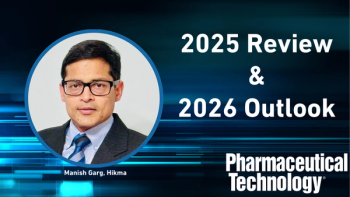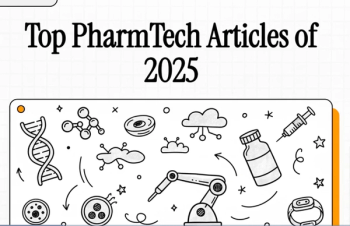
Equipment and Processing Report
- Equipment and Processing Report-03-18-2009
- Volume 0
- Issue 0
The Shape of Biopharmaceutical Facilities to Come
The spotlight on the biopharmaceutical industry is intensifying, as recently evidenced by Pfizer's (New York) ongoing acquisition of Wyeth (Madison, NJ), which was initiated partly to reduce the former's dependence on small-molecule drugs.
The spotlight on the biopharmaceutical industry is intensifying, as recently evidenced by Pfizer’s (New York) ongoing acquisition of Wyeth (Madison, NJ), which was initiated partly to reduce the former’s dependence on small-molecule drugs. Rising titers and the adoption of disposable technologies are among the recent changes witnessed in the industry. These and other developments will shape the biopharmaceutical production process and the design of large-molecule manufacturing facilities in the future.
Finding flexibility
Developments in proteomics and genomics have broadened the range of possible applications of new biopharmaceutical drugs. The number of new drugs will keep rising, but each new medicine will serve a much smaller, more focused market than previous therapies have, says Doug Parker, quality-control microbiology manager at Xcellerex (Marlborough, MA). Smaller market demand, increasing titers, and higher product yields will result in smaller batch sizes. For these reasons, companies will have to establish flexible, multidrug production facilities, Parker says.
For example, MedImmune’s (Gaithersburg, MD) new production site in Frederick, Maryland, was designed to enable flexibility and rapid capacity expansion, says Ben Machielse, the company’s executive vice-president of operations. The facility includes two modules fitted out with full utilities such as water for injection and steam. One module was developed into a full bioreactor and purification facility, and the second module can be converted to a bioreactor facility and begin production in two years if necessary.
The “FlexFactory” production line at Xcellerex’s Marlborough facility illustrates another strategy for designing flexible manufacturing. The FlexFactory platform is based on disposable technologies and uses a controlled environment module (CEM) to reduce the size of the cleanroom around each unit operation. The CEM approach enables all unit operations to be located in one hall with basic utility requirements. The platform also allows production lines to be reconfigured quickly as multidrug lines, Parker says.
Improving efficiency
In multiproduct facilities, long changeovers create downtime, reduce efficiency, and waste money. MedImmune set standards to shorten changeover times to significantly less than one day, says Machielse. One of the company’s strategies is to use disposable components, which reduce changeover to a matter of hours and also minimize the need for cleaning validation.
Bottlenecks remain problems for biopharmaceutical companies, and they can arise during various stages of production. MedImmune’s aggressive operational-excellence (OE) program analyzes processes and capacity using the standard OE concepts to help the company understand where bottlenecks occur and how to manage them, says Machielse.
Improving downstream processes
In recent years, increased bioreactor yields have moved the main site of bottlenecks from the bioreactor to the purification phase. Designing a facility with multiple purification suites has become the norm, and companies will spend more time and money to make their purification suites flexible, Machielse says.
For example, microfiltration steps present challenges because they have low throughput and do not cope well with large bioreactor capacities or high cell densities. To expand downstream capacity, MedImmune replaced microfiltration steps with continuous-flow centrifugation, which is more easily scalable and has a higher throughput.
Disposable components and in line dilution of buffers could also expand downstream processing capability, according to Saul Edenbaum, director of process engineering at Integrated Project Services (Lafayette Hill, PA). Concentrated forms of buffers and other solutions can be made in single-use bags and pumped to an in line dilution station that adds the concentrate to appropriate amounts of purified water. In addition, the entire line containing the flow of the solutions can be replaced by single-use tubing to create a flexible processing scenario for multiproduct purifications, says Edenbaum.
The purification stage itself is changing, too. Protein A resins have been the standard first step, but many biopharmaceutical facilities are looking to abandon them because they are expensive. MedImmune has replaced protein chromatography in the new purification process.
Also, manufacturers are considering exchanging traditional column chromatography for membrane-bound chromatography media to maximize throughput. Membrane-bound chromatography speeds up flow through chromatography, according to Machielse. The technology also enables companies to perform several steps (e.g., ultrafiltration and chromatography) at the same time.
Conclusion
Scientific and technological advances have brought many changes to biopharmaceutical production. The heightened focus on large molecules and the demand for potent, personalized medicines will surely spur further research and innovation. Enabling flexible production and improving purification efficiency will be major concerns for the industry in the near future.
Articles in this issue
almost 17 years ago
A Proactive Maintenance Approach Increases Efficiency and Reduces Costsalmost 17 years ago
March 2009 Editor's Picks: Products from Portafab and SterlingNewsletter
Get the essential updates shaping the future of pharma manufacturing and compliance—subscribe today to Pharmaceutical Technology and never miss a breakthrough.




